On This Day - June 19, 1861 - Dr. Jose P. Rizal, was born in Calamba, Laguna
On June 19, 1861, Jose Protacio Rizal Mercado y Alonzo Realonda, Philippines National Hero, was born in Calamba, Laguna to Francisco Engracio Rizal Mercado y Alejandro and Teodora Morales Alonzo Realonda y Quintos both of Chinese descent. Jose was the seventh of eleven children, Jose was baptized by Father Rufino Collantes on June 22, 1861, with Father Pedro Casanas as his godfather. Jose’s siblings were: Saturnina, Paciano, Narcisa, Olimpia, Lucia, Maria, Concepcion, Josefa, Trinidad and Soledad.
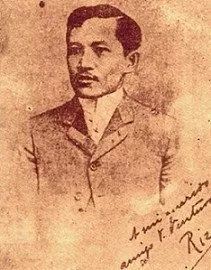
|
|
| (Dr. Jose P. Rizal) |
Early on, Jose manifested exceptional intelligence. He learned the alphabet at the age of three from his mother and was trained to do outdoor activities like riding horses. Father Leoncio Lopez influenced him to exude character that held high respect for the rights of others. At the age of nine, his parents sent him to study Biñan in the school of Don Justiniano Aquino Cruz, who, after a few months, reported to his parents that he had nothing more to learn in school. Jose excelled in academics and in physical activities.
Jose was allowed to study in Manila at the prodding of his brother, Paciano. By this time, he was already using the second family name, Rizal, in order to avoid complications in his studies, which the Mercado family name used by his brother Paciano could bring on him. His brother Paciano had earned the ire of the Spanish friars because of his relationship with Father Jose Burgos. Jose passed the entrance examinations at Colegio de San Juan de Letran owned by the Dominicans but he chose to study at Ateneo Municipal after learning that Dominican friars in Calamba were pursuing a court case against his mother. In 1872, he was admitted at the Ateneo through the help of Dr. Manuel Xeres Burgos, a nephew of Fr. Jose Burgos, and a close friend of Paciano. Burgos was able to convince Father Magin Fernando to admit Rizal at Ateneo.
On March 14, 1877, Jose obtained his Bachelor of Arts degree at Ateneo Municipal with high honors for excelling in academics. It was during his student days in Ateneo that his extreme giftedness in poetry, writing, painting and sculpture became known. One of the masterpieces he did at Ateneo was a sculpture of the statue of the sacred heart of Jesus and some of his literary works have won prizes like: Felicitacion, Por La Educacion Recibe Lustre la Patria, Un Recuerdo a mi pueblo, and El heroismo de colon.
In 1878, Jose studied Medicine, and Philosophy and Letters at the University of Santo Tomas and at the same time pursued a course in surveying at the Ateneo. Alongside with his academic studies at UST, Rizal actively participated in literary activities. He won first prize for his poem "A La Juventud Filipina" (To the Filipino Youth) in the literary contest sponsored by the Liceo Literario Artistico. Because he was a native, he experienced discrimination like when his entry "The Council of the Gods" which many spectators adjudged winner was awarded second to a work of a Spaniard.
In 1882, Jose sailed to Spain where he hoped to have better education and training, with the help of Paciano, his uncle Antonio Rivera and his friend Chenggoy (Jose Cecilio). It was Antonio Rivera who helped secure passage ticket for him to board the ship that would bring him to Singapore where he would take another ship to Spain.
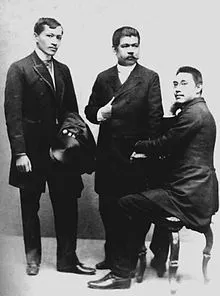
|
|
| (Left to right: Jose Rizal, Marcel del Pilar, and Mariano Ponce) |
One who had wielded influence among his countrymen abroad; Rizal’s speeches in gatherings of Filipino students were considered a gem. His speech, honoring Juan Luna and Felix R. Hidalgo, who both won the top prizes for their respective paintings during the Art Exposicion in Madrid in June 1884, saying: "Juan Luna and Felix R. Hidalgo are glories of Spain in the Philippines ..." was published in La Solidaridad.
Wanting to become an expert in the medical field, he trained under known specialists in Europe, like under Dr. Louis de Wecker, a famous ophthalmologist in Paris. He acquainted himself with other doctors like Otto Bayer, and Hans Meyer in Heidelberg, Germany. Alongside with his trainings and busy activities in the campaign for reforms was his pursuit in literature. He translated Schiller’s William Tell and Andersen’s Fairy Tales to Tagalog. He joined prestigious scientific societies in Europe.
Rizal’s committed campaign for reforms in the Philippines led him to write his two novels: the Noli Me Tangere, and El Filibusterismo. His first novel, partly written while he was staying in the home of a Protestant Minister, Pastor Karl Ullmer, in Wilhelmsfeld town in Heidelberg, Germany, was published in March 1887 through the financial assistance of his friend, Dr. Maximo Viola. His friend loaned him P300 to print the first 2000 copies. Both of his novels portrayed the pathetic situation of the Filipinos in the hands of the Spanish authorities and the influential Religious corporations. Copies of the novels were smuggled into the country since the Spanish authorities banned them.
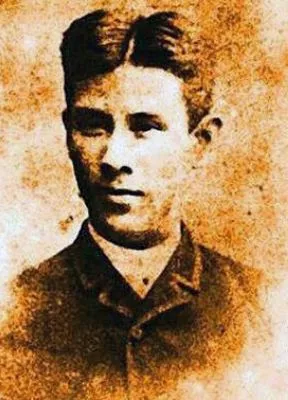
|
|
| (Maximo Viola) |
Since the publication of his first novel, Rizal's life in the Philippines became different. The Spanish friars who declared Noli me Tangere, impious, heretic, scandalous to the Catholic Church and injurious to the government, hated him. Thus, the liberal-minded Spanish Governor-General Emilio Terrero, concerned for his safety advised him to leave.
On February 3, 1888, Rizal left Manila. He sailed to Hong Kong, where he met Jose Ma. Basa. From Macao, he sailed to Japan, the United States, and in England. In Japan, the Spanish government offered Rizal a job as interpreter but he chose to be on his own. After staying for almost two months in Japan where he learned about Japanese arts, language and culture, he sailed to America. He left Japan on February 28, 1888 aboard the SS Belgic. He arrived in San Francisco on April 18, 1888, lodged at the Palace Hotel and then took a transcontinental train to the US East Coast via Chicago and the Niagara Falls in Lake Ontario. He stayed at the Fifth Avenue Hotel in New York for a while and sailed for England aboard the SS City of Rome, arriving at the Liverpool on May 24, 1888.
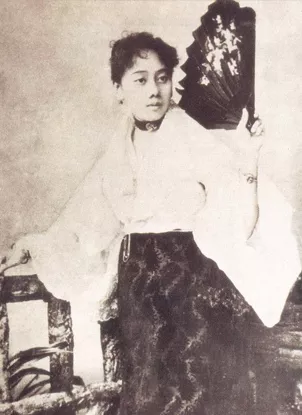
|
|
| (Leonor Rivera) | |

|
|
| (Beautiful Japanese, O-sei-san) | |

|
|
| (Frenchwoman Nellie Bousted one of Rizal's love) |
He Spoke Spanish, French, German, English, Dutch, Greek, Latin and Tagalog. He had knowledge of Ilocano, Visayan, Russian, Sanskrit, Arabic, Swedish, Hebrew, Malayan, Chinese, Japanese, Portuguese and Italian.
While in London, Rizal copied Antonio Morga’s Sucesos de las Islas Filipina, published in 1609, which he planned to annotate. It was during this work that he became acquainted with Dr. Reinhold Rost, a librarian and editor of Trubner’s Record. Rizal busied himself with other works while in England, he wrote the "Vision of Father Rodriguez" and "Letter to the Young Women of Malolos", both published in 1889.
In 1889, Rizal was in Paris where he published Morga's book with his annotations, founded Indios Bravos and witnessed the International Exposition. On January 18, 1890, he moved to Belgium where he became close with Jose Albert and Jose Alejandrino. Later, Albert would receive honor for his contributions in the medical field while Alejandrino would be remembered for fighting during the revolution against Spain and America. In Belgium, Rizal lived in poverty. The printing of his second novel, El Filibusterismo, a sequel of Noli Me Tangere, was stopped because of financial constraints until Valentin Ventura, a rich compatriot, came to his aid. Thus the book came out of the press on September 18, 1891.
Depressing news reached him from home. His sweetheart Leonor Rivera married Engineer Kipping; his folks were ejected en masse from Calamba; and the Spanish officials who were sympathetic to the reform movement turned hostile. He took his vacation at Biarritz at the invitation of the Bousteds. While there, Nellie Bousted proved to be a balm for his wounded feelings. Later, he left for Paris then went to Marseilles and boarded the SS Melbourne for Hong Kong. With his dwindling funds, he received money for his passage ticket sent to him by Jose Ma. Basa, a rich Filipino merchant who was living in exile in the British colony.
He arrived in Hong Kong on November 20, 1891. There, his family, ejected from their lands in Calamba, joined him through the financial help extended by his compatriots led by Jose Anacleto Ramos (Ishikawa). He practiced medicine to earn a living and at the same time, continued to support the campaign for reforms and to look for ways that could better the lives of the Filipinos. He proposed that a Filipino colony to accommodate Filipinos ousted from their lands in the Philippines be established. With funding from his friends, he went to Borneo aboard the SS Memnon. The British authorities were already agreeable to a 950-year lease of the proposed colony in Borneo but the Spanish Governor General Emilio Despujol refused to allow the Filipinos to migrate in North Borneo.
On June 26, 1892, he arrived in Manila with his sister Lucia aboard the SS Don Juan. Few days after, on July 3, he founded the Liga Filipina in the house of Doroteo Ongjunco on Ilaya Street in Tondo, Manila. The association was aimed to unite the Filipinos and for them to help each other in times of need, and to encourage them to be educated and trained in agriculture. The association was, however, short lived for after a few days of its founding, Rizal was arrested on flimsy charges. One of which was the leaflet entitled Pobres Frailes, a sarcastic allusion to the friars found on his baggage when he arrived from Hong Kong.
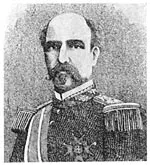
|
|
| (Eulogio Despujol) |
On July 17, 1892, Rizal was deported to Dapitan under the watchful eye of Ricardo Carnicero, the military commandant of Dapitan. One who never allowed time to be spent idly, Rizal busied himself with activities that were also beneficial to others. He established a clinic, a school, and constructed a water system. He bought tracts of land from his lottery winning and developed it into a farm. Loneliness impelled him to write Mi Retiro but reflected the strength of his spirit when he composed the hymn "Talisay".
He corresponded unceasingly with Ferdinand Blumentritt and other scientists he met abroad. He gathered specimens of plants and insects and sent them to his scientists friends abroad. His fame as an eye specialist lured patients to visit him in Dapitan. Among the most important was Engineer George Tauffer, who arrived with his foster daughter, Josephine Bracken. Soon, Josephine became his wife. Having inspired the revolutionary spirit of the Filipinos, Rizal was visited by Pio Valenzuela, an aid of Bonifacio to get his word about an armed uprising against the Spaniards. He was also offered help for his escape but he refused.
On July 31, 1896, Rizal sailed to Manila with Josephine, his sister Narcisa and other relatives after the Spanish government took his offer as doctor for the Spanish soldiers fighting against the rebel forces of Jose Marti in Cuba. Upon reaching Manila, Rizal was informed that his boat to Cuba had already sailed, thus, he was transferred to the Castilla then anchored in Cavite until another boat, the Isla de Panay took him to Singapore. There, Pedro Roxas urged him to leave the boat, assuring him his safety in the British Territory but he refused.
On September 30, 1896, while the Isla de Panay was sailing through the Middle East, the ship captain received orders of Rizal’s arrest on charges that he had a hand in the revolution that was already raging in the Philippines. Thus, Rizal arrived in Barcelona as a prisoner and was briefly detained at the Montjuich Penitentiary. The following day, he was shipped back to the Philippines on the boat Colon. His friends tried to rescue him by court proceedings. While the boat was in Singapore, Dr. Antonio Ma. Regidor and some British lawyers who, through Lord Hugh Fort, filed writ of habeas corpus in the Supreme Court of the Straits Settlements for his release on the ground that he was illegally detained. But Judge Lionel Cox ruled that the Colon was a troopship flying the Spanish Flag and that he was a Spanish subject. Therefore his case was not under British jurisdiction.
On November 3, 1896, the famous prisoner arrived in Manila and was imprisoned at Fort Santiago. On November 26, he was tried by the military court on the charges of rebellion, sedition and illegal organization of societies presided by Judge Advocate Enrique Alcocer at the Cuartel de España. Rizal’s defense counsel was Lieutenant Luis Taviel de Andrade, whose efforts to save him failed. He was meted the death penalty.

|
|
| (Execution of Dr. Jose Rizal at Bagumbayan (A reproduction of an original photo taken during the execution of Dr. Jose Rizal)) |
On December 30, 1896, he was marched out of Fort Santiago toward Bagumbayan Field. With him were Fathers March and Villaclara and his legal counsel, Luis Taviel de Andrade. Before he was shot, he handed his belt to his nephew, Mauricio. The Spanish doctor, Ruiz y Castillo, felt his pulse and found it normal. Rizal faced the Filipino soldiers of the firing squad guarded by the Spanish soldiers. Volleys were fired. He fell but with a great effort, he turned his back and fell facing his executioners.
Two years after, on August 17, 1898, his sisters exhumed his remains buried at the Paco Cemetery and kept it at their residence in Binondo before it was finally rested at the monument in his honor at Luneta, now Rizal Park.
References:(Bantug, Asuncion Lopez. Lolo Jose An Intimate Portrait of Rizal. 1982. Coates, Austin. Rizal Philippine Nationalist and Martyr. Manila: Solidaridad Pub. House, 1992.
Eminent Filipinos. Manila: National Historical Commission. 1970
Fernandez, Jose Baron. Jose Rizal Filipino Doctor and Patriot. Manila: Rex Printing Co., 1980.
Zaide, Gregorio. Great Filipinos in History. Manila: Verde Bookstore, 1970.) all via The Philippine Historical Commission

No comments:
Post a Comment